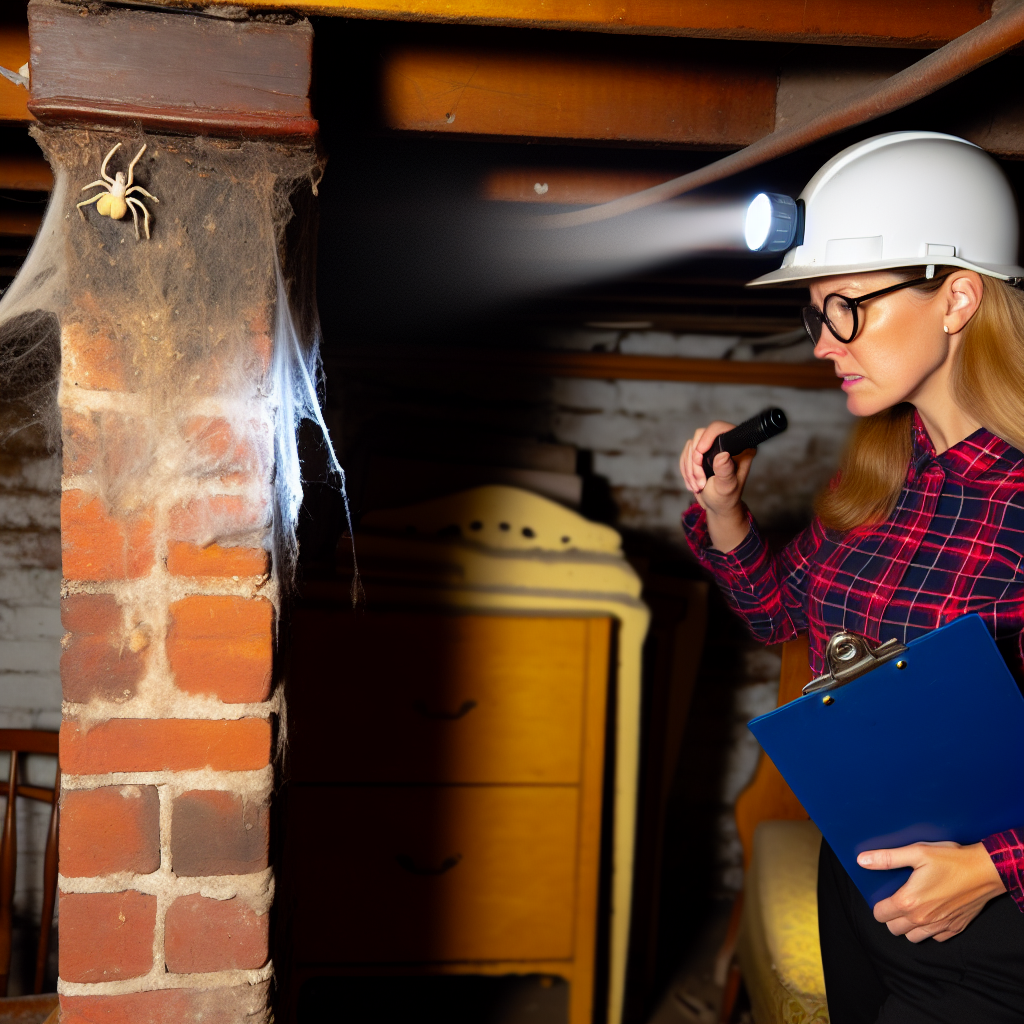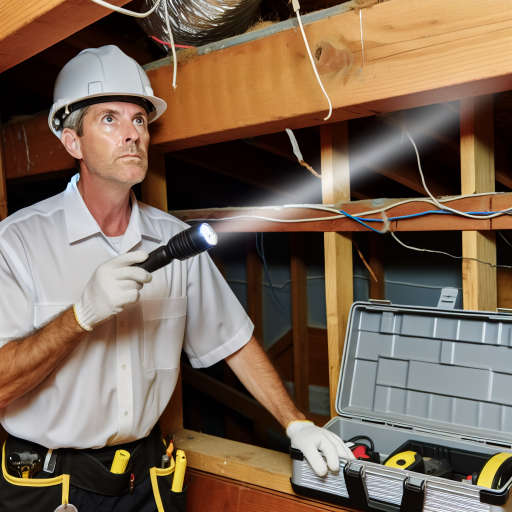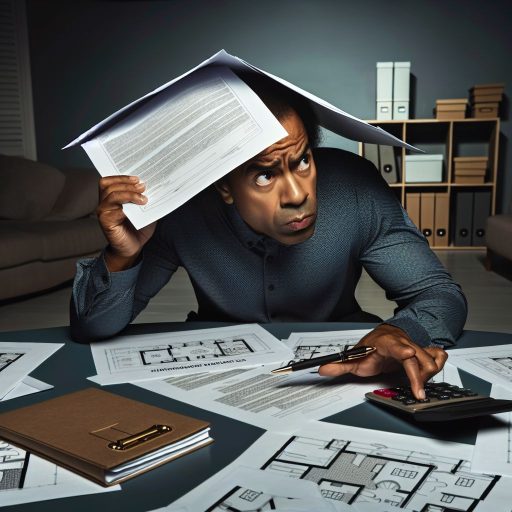Understanding the Importance of a Home Inspection Checklist
Recognizing the Value of Home Inspections
A professional home inspection provides peace of mind for buyers.
It uncovers hidden defects that may not be visible during a casual visit.
Additionally, it helps in identifying potential safety hazards.
These inspections can save homeowners from costly repairs in the future.
Components of a Thorough Home Inspection Checklist
A comprehensive checklist includes several key areas of focus.
These areas typically encompass the roof, foundation, and electrical systems.
Moreover, inspectors will review plumbing and HVAC systems carefully.
Each component requires attention to ensure the home is in top condition.
Ensuring Buyer Confidence
Buyers feel more confident after a thorough inspection is completed.
They gain insights into the property’s overall condition.
This knowledge can influence their purchasing decisions significantly.
A detailed report from the inspector acts as a valuable negotiation tool.
Identifying Red Flags
A home inspection checklist highlights significant red flags for buyers.
Issues like mold, pest infestations, and structural weaknesses may arise.
Addressing these issues early can prevent major problems later.
In many cases, this identification can be a deal-breaker.
Educating Homeowners on Maintenance
Home inspections also educate homeowners about maintenance needs.
An inspection checklist can guide homeowners on regular upkeep.
This proactive approach helps preserve the home’s value over time.
Furthermore, it enhances the living environment for families.
Key Components of a Professional Home Inspection Checklist
Exterior Inspection
The exterior inspection begins with the foundation.
Inspect for cracks or signs of settling.
Next, examine the walls and siding.
Look for damage from weather or pests.
Roofs are also critical.
Check for missing shingles or leaks.
Gutters must be cleared and functional.
Ensure they direct water away from the foundation.
Lastly, check exterior doors and windows.
Look for proper seals and functioning locks.
Interior Inspection
The interior inspection covers numerous areas.
Start with the walls and ceilings for cracks or water stains.
Next, assess the floors.
Check for sagging or uneven surfaces.
Examine the plumbing fixtures.
Inspect for leaks, corrosion, or water pressure issues.
Electrical systems require inspection too.
Check for outdated wiring and functional outlets.
Don’t forget the HVAC systems.
Test heating and cooling functions throughout the home.
Attic and Basement Inspection
Inspect the attic for insulation and ventilation.
Check for signs of moisture or rodent activity.
In the basement, look for water intrusion.
Check for mold and structural issues.
Evaluate the drainage systems.
Ensure proper water flow away from the home.
Safety Features
Safety features protect everyone in the home.
First, check smoke detectors and carbon monoxide alarms.
Examine fire escapes and exits.
Ensure they are accessible and well-marked.
Test safety railings on stairs and balconies.
Confirm they meet safety standards.
Documentation and Reporting
Finally, thorough documentation is essential.
Compile a report detailing all findings.
Use photographs to support observations.
This documentation aids homeowners in making informed decisions.
Consider including recommendations for repairs or maintenance.
This guidance helps prioritize issues based on severity.
Common Hidden Issues Found During Home Inspections
Structural Problems
Structural issues often hide behind walls and ceilings.
Inspectors check for cracks in the foundation or walls.
They also assess the integrity of load-bearing beams.
Unnoticed structural damage can lead to costly repairs.
Electrical Hazards
Faulty wiring poses a significant risk in many homes.
Inspectors look for outdated electrical systems.
They identify signs of overloaded circuits.
Additionally, improper grounding can create fire hazards.
Pest Infestations
Pests can secretly damage a home’s structure.
Inspectors search for evidence of termites or rodents.
They examine wood beams and insulation for signs of infestation.
Early detection helps prevent extensive damage.
Plumbing Issues
Hidden leaks can wreak havoc over time.
Inspectors examine water pipes and drainage systems.
They test water pressure and look for unusual dampness.
Unattended plumbing issues can lead to mold growth.
HVAC Systems
Malfunctioning HVAC systems often remain unnoticed.
Inspectors evaluate heating and cooling systems during the inspection.
They assess airflow and duct integrity for efficiency.
Regular maintenance is essential for optimal performance.
Roofing Concerns
Roof issues are often hidden from plain view.
Inspectors assess shingles, flashing, and gutters for damage.
They also check for signs of leaks in the attic.
Roof maintenance prevents significant water damage.
Environmental Hazards
Some homes may have environmental hazards like asbestos.
Inspectors test for lead paint in older constructions.
Mold and radon gas are also common concerns.
Addressing these hazards ensures a safer living environment.
Explore Further: How To Research Local Housing Markets As A First-Time Homebuyer
How to Choose a Qualified Home Inspector
Researching Potential Inspectors
Begin by gathering names of local home inspectors.
Utilize online resources and directories for recommendations.
Ask friends or family for referrals based on their experiences.
Check reviews and ratings on platforms like Google and Yelp.
Verifying Credentials
Ensure the inspector is certified by a recognized organization.
Look for credentials from the American Society of Home Inspectors.
Confirm that the inspector has proper insurance and licensing.
This protects you in case of any errors or accidents.
Assessing Experience
Experience matters significantly when selecting an inspector.
Inquire about how many inspections they have conducted.
Ask about their familiarity with the type of property you own.
Consider inspectors who have experience in your specific area.
Understanding the Inspection Process
Discuss what the inspection will cover in detail.
Confirm the duration of the inspection and the format of the report.
Make sure they will explain findings clearly after the inspection.
Clarify what tools and technology will be used during the process.
Receiving Sample Reports
Request examples of previous inspection reports if possible.
Review the clarity and thoroughness of these reports.
Look for concerns raised in the sample inspections.
This will give you insight into their inspection method.
Asking Questions and Making Comparisons
Prepare a list of questions to ask during your initial meeting.
Compare responses from multiple inspectors before deciding.
Evaluate not only qualifications but also communication style.
Choose someone you feel comfortable expressing concerns to.
Learn More: What to Look for During an Open House to Avoid Costly Repairs
Tips for Homeowners: Preparing for an Inspection
Understand the Purpose of the Inspection
A home inspection reveals the overall condition of a property.
This process helps identify potential issues early.
It also provides insight into necessary repairs or maintenance.
Choose a Qualified Inspector
Look for certified and experienced home inspectors.
Check reviews and ask for referrals from friends or family.
Ensure they understand your specific needs and concerns.
Prepare Your Home for the Inspection
Clear pathways and provide easy access to major systems.
Make sure areas like the attic and basement are accessible.
Fix minor repairs before the inspection day.
Gather Important Documents
Have paperwork related to past repairs and maintenance ready.
This could include warranties and service contracts.
Also, include records of any upgrades or improvements made.
Communicate with the Inspector
Discuss your concerns and questions before the inspection begins.
Provide insights on issues you’ve noticed around the home.
This open dialogue can lead to a more thorough inspection.
Be Open to Feedback
Understand that the inspector’s job is to provide an honest assessment.
Be prepared for both positive and negative feedback.
Take notes for later reference, especially on necessary repairs.
Uncover the Details: Home Inspection Checklist For Rural And Suburban Homes In The USA

Interpreting Inspection Findings
Common Issues to Identify
A professional home inspection reveals various hidden issues.
Look for signs of water damage, which may indicate leaks.
Check for mold growth in areas with high humidity.
Inspect the foundation for cracks or signs of settling.
Examine the roof for missing shingles or damage.
Pay attention to the electrical systems, as outdated wiring can be dangerous.
Evaluating Structural Integrity
Assess the overall structure of the home carefully.
Identify any sagging or uneven floors, which may suggest foundation problems.
Check load-bearing walls for modifications that could weaken the structure.
Inspect the attic for signs of support beam issues or water intrusion.
Understanding Utility Systems
Thoroughly evaluate plumbing systems during inspections.
Look for leaks under sinks and check the condition of pipes.
Inspect the water heater for rust or signs of age.
Test the heating and cooling systems to ensure they function properly.
Recognizing Potential Health Hazards
Be aware of potential health hazards during inspections.
Check for the presence of asbestos in older homes.
Identify lead paint in homes built before 1978.
Investigate any pest infestations, including termites and rodents.
Documenting Findings
Carefully document all findings from the inspection.
Take photos of significant issues to support reports.
Compile a list of recommendations for repairs and follow-ups.
Share the inspection report with relevant parties for transparency.
Gain More Insights: How to Determine the True Value of a Home Before Making an Offer
Addressing and Resolving Major Issues Found in Inspections
Understanding Major Issues
A professional home inspection identifies significant problems in a property.
These issues may include structural defects, plumbing leaks, or electrical hazards.
Addressing these matters quickly is critical for homeowner safety.
Prioritizing Repairs
After an inspection, prioritize repairs based on severity.
Safety concerns should always come first.
Structural issues often require immediate attention.
Next, address plumbing and electrical problems to prevent further damage.
Consulting Professionals
Some issues require specialized expertise to resolve effectively.
For example, structural problems often need a licensed contractor.
Consulting a professional ensures safety and quality repairs.
Additionally, hiring certified electricians is crucial for electrical hazards.
Budgeting for Repairs
Repairs can be expensive, so budgeting is essential.
Start by gathering estimates from various contractors.
Compare quotes to find the best fit for your needs.
Furthermore, consider setting aside an emergency fund for unexpected expenses.
Maintaining Proper Documentation
Keep records of all inspections and repairs.
This documentation is valuable for future buyers.
A comprehensive history boosts property value and assures buyers.
Moreover, keeping receipts for repairs may assist in tax deductions.
Preventive Measures for the Future
Take preventive action to avoid future issues.
Regular maintenance can significantly extend your property’s life.
Schedule annual inspections for peace of mind.
Additionally, develop a maintenance checklist for seasonal tasks.
The Role of Follow-up Inspections After Initial Findings
Importance of Follow-up Inspections
Follow-up inspections are essential in the home inspection process.
They help confirm the initial findings and assess their significance.
Additionally, these inspections uncover any issues that may have been missed.
Timing of Follow-up Inspections
Scheduling follow-up inspections promptly is crucial for effective results.
Homeowners should ideally arrange the inspection soon after the initial one.
This approach allows for timely remediation of any identified issues.
Areas Requiring Attention
Several areas may necessitate follow-up inspections.
- Structural elements should be re-evaluated for signs of damage.
- Electrical systems must be checked for safety and compliance.
- Plumbing should be inspected for leaks or blockages.
- Roofing conditions need further exploration after heavy rains.
Engaging Qualified Inspectors
Choosing qualified inspectors is vital for thorough follow-up evaluations.
Look for professionals with current certifications and positive reviews.
Experienced inspectors provide accurate assessments and recommendations.
Documenting Findings
Proper documentation is necessary for follow-up inspections.
Inspectors should provide clear reports detailing observations.
Homeowners should keep records for future reference.
Next Steps After Follow-up Inspections
Determining the next steps is vital after follow-up inspections.
If new issues are identified, homeowners should plan appropriate repairs.
Consulting with specialists may also be beneficial for major concerns.
Additional Resources
Blogs – Ally Property Inspections
What are some red flags to look for when buying a house for the first …




